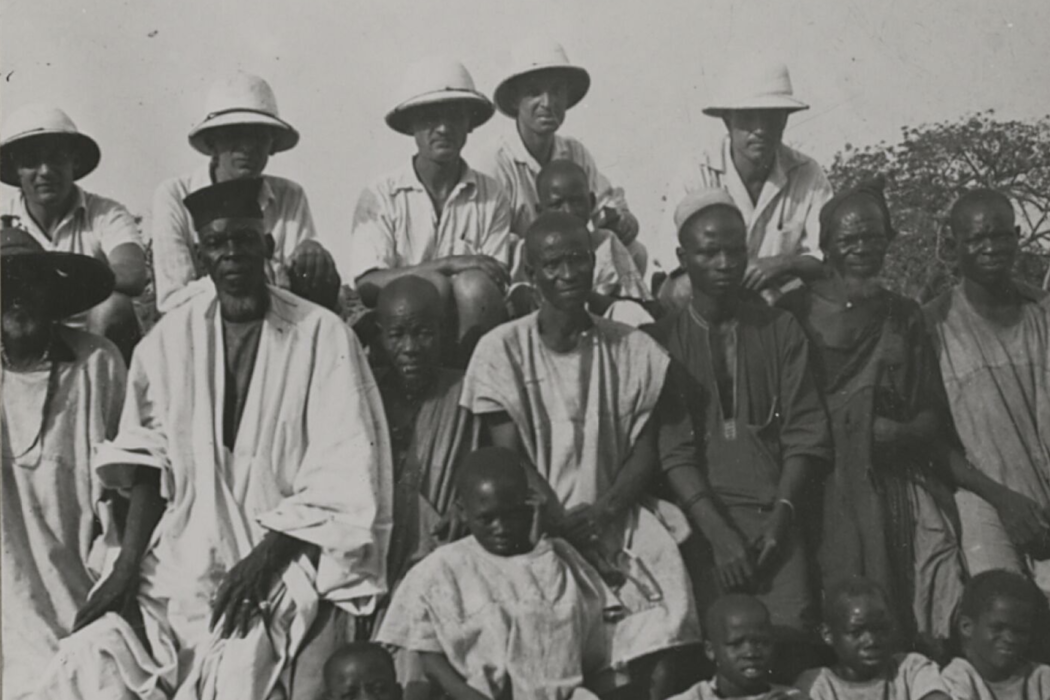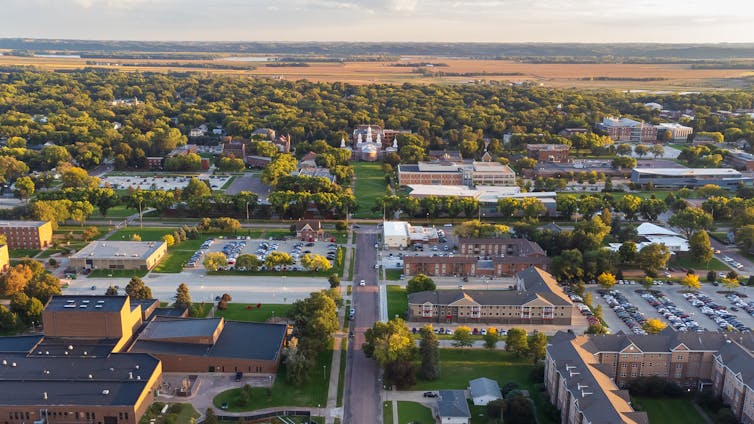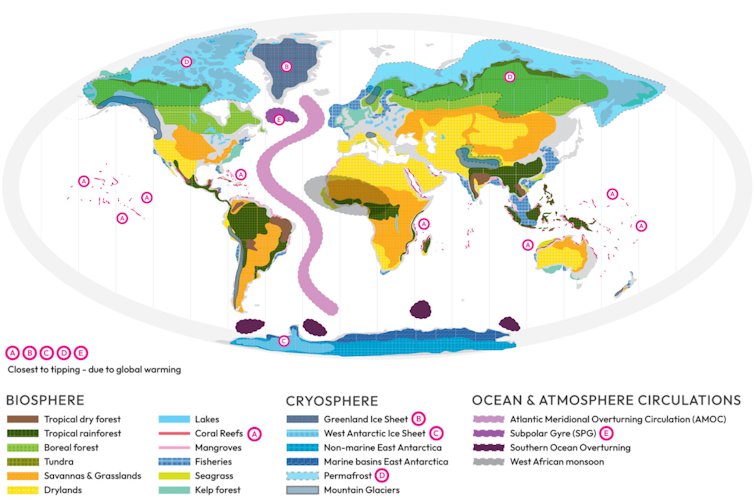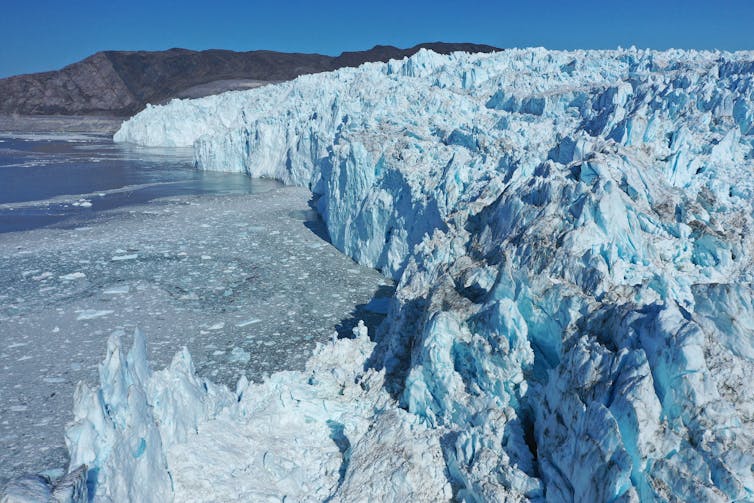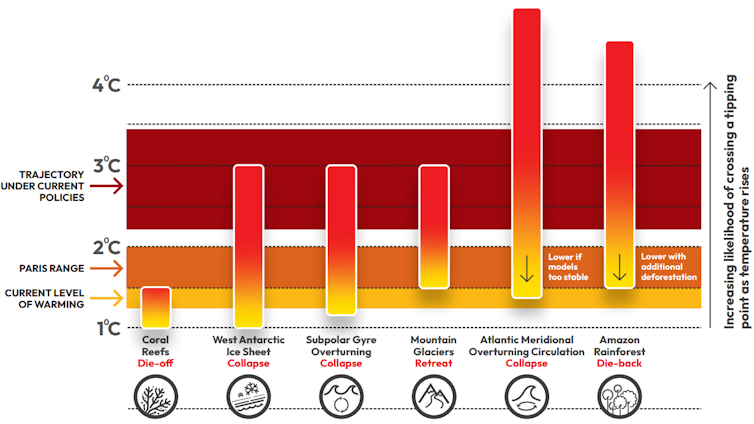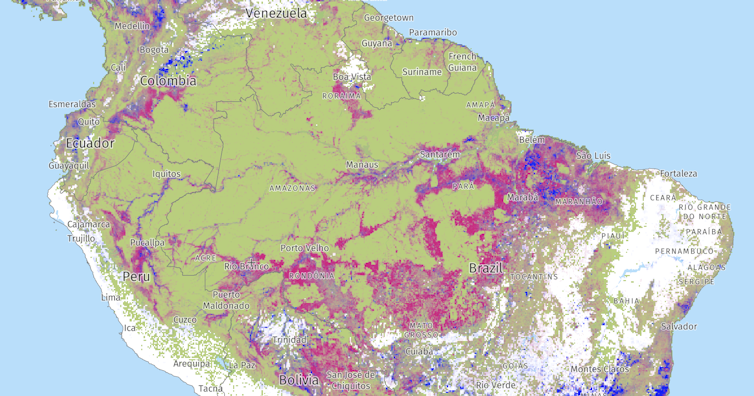Source: The Conversation – in French – By Frédéric Aubrun, Enseignant-chercheur en Marketing digital & Communication au BBA INSEEC – École de Commerce Européenne, INSEEC Grande École
Ce qui devait être un récit unique devient une franchise : « Monsters » s’impose désormais comme une véritable anthologie du mal, explorant tour à tour la barbarie cannibale, la violence familiale et les dérives de l’imaginaire macabre.
En 2022, Netflix lançait Dahmer – Monster : The Jeffrey Dahmer Story, initialement conçue comme une série limitée. Mais face au succès (plus d’un milliard d’heures de visionnage en soixante jours), Ryan Murphy et Ian Brennan transforment leur projet en anthologie. L’année suivante, une deuxième saison est consacrée aux frères Menendez, ces deux adolescents de Beverly Hills (Californie) devenus tristement célèbres pour avoir assassiné leurs parents. Depuis octobre 2025, c’est Ed Gein, dit le « boucher de Plainfield », qui fait son apparition : un meurtrier dont les crimes ont inspiré le personnage de Norman Bates (Psychose) ou celui de Leatherface (Massacre à la tronçonneuse).
Mais il y a quelque chose d’encore plus troublant que ces histoires elles-mêmes : la façon dont elles nous sont racontées. Car, contrairement à la plupart des séries, Monsters n’a pas de générique. Pas de sas, pas de transition.
Dès la première image, nous sommes dans la cuisine de Dahmer, dans la limousine des Menendez, sur la ferme de Gein. Sans préparation, sans médiation : la sidération est immédiate.
Sans générique : bienvenue dans l’antre du monstre
Contrairement à de nombreuses séries de Ryan Murphy, Monsters se distingue par l’absence de véritable générique. Cet effacement du seuil narratif n’est pas anodin.
Dans la saison de Dahmer, la première image nous plonge directement dans son appartement miteux de Milwaukee (Wisconsin). Pour les frères Menendez, c’est une limousine glissant dans les rues ensoleillées de Beverly Hills. Quant à Ed Gein, nous le découvrons accomplissant ses corvées dans les champs glacés du Wisconsin. Trois ouvertures, une même stratégie : abolir la frontière entre notre réalité et celle des tueurs.
Dans nos travaux, nous montrions comment le générique fonctionne comme « un espace intermédiaire entre l’espace privé du téléspectateur et l’espace fictionnel ». C’est un sas symbolique qui permet de passer progressivement du quotidien vers l’univers de la fiction. En supprimant ce seuil, Monsters radicalise le rapport au réel.
Là où les génériques évolutifs de Game of Thrones ou The White Lotus créaient un dialogue avec le spectateur, Monsters refuse toute médiation esthétique. La série abolit cet espace intermédiaire et nous plonge directement dans la matière du crime. Cette suppression du rituel d’entrée produit ce qu’Hervé Glevarec (2010) nomme un « effet de réel » saisissant : l’univers diégétique vient toucher le monde réel, abolissant toute distance protectrice.
Comment juger acceptable ce qui nous est imposé sans préambule, sans le moment rituel de la transformation ? En éliminant le générique, Monsters court-circuite toute distance critique et nous transforme en témoins involontaires, presque en voyeurs d’une monstruosité déjà accomplie.
À lire aussi :
De l’importance des génériques de séries
Humaniser les tueurs pour enrichir le récit
Pour comprendre comment Netflix peut transformer des faits divers en franchise infinie, il faut mobiliser le concept d’univers fictionnel développé par Lubomir Dolezel (1998). Dans nos travaux sur le traitement médiagénique de Batman, nous avions montré comment les médias puisent dans trois « textures » d’un univers fictionnel.
La texture explicite désigne ce qui est explicitement présent dans les archives : les crimes, les arrestations, les procès. La texture implicite concerne ce qui pourrait survenir dans le récit sans nous étonner : la vie quotidienne des tueurs, leurs relations, leurs espaces privés. Enfin, la texture zéro ou vague représente l’infini des possibilités pouvant subvenir dans le récit sans en altérer son authenticité : les pensées, les rêves, les motivations profondes, l’humanité cachée des tueurs.
Monsters exploite massivement les textures implicite et zéro. Ce qui n’était pas dit dans les reportages judiciaires devient le terrain d’exploitation du récit sériel. Netflix fait basculer l’implicite dans le champ explicite : la solitude de Dahmer, les dynamiques familiales des Menendez, la relation toxique de Gein avec sa mère. Tout ce qui relevait du domaine vague (leurs émotions, leurs désirs, leur humanité) devient matière narrative.
Cette stratégie répond aux exigences de ce que nous avions nommé la « machine à récit » : la série télévisée comme gigantesque machine affamée d’histoires. Pour alimenter cette machine de manière hebdomadaire, Netflix construit un univers fictionnel riche en possibilités narratives. Chaque tueur devient le centre d’une saison entière, chaque saison explore un nouveau monstre. L’anthologie est par essence extensible à l’infini : il existera toujours un nouveau tueur à transformer en personnage de tragédie.
Le spectateur-voyeur : la leçon d’Hitchcock
« Tout spectateur est un voyeur », affirmait Alfred Hitchcock. Ce mantra du maître du suspense résonne de manière troublante dans Monster: The Ed Gein Story, avec la présence figurative de Hitchcock (interprété par Tom Hollander) dès le deuxième épisode. Car la série interroge précisément le dispositif qui alimente notre fascination : le regard.
Dès le premier épisode, Ed Gein observe, dans l’entrebâillement d’une porte, une jeune femme en sous-vêtement. Sa pupille se dilate d’excitation. Cette image séminale renvoie en miroir au plan mythique de Psychose (1960), où Norman Bates (joué par Anthony Perkins) observe Marion Crane (jouée par Janet Leigh).
Le parallèle est explicite : la série nous rappelle que l’affaire Ed Gein a contaminé tout le cinéma d’horreur américain. La fascination pour le mal qui incombe à chaque spectateur ayant porté aux nues ce genre dès les années 1960.
À lire aussi :
Psycho turns 60 – Hitchcock’s famous fright film broke all the rules
Certaines critiques dénoncent le voyeurisme de la série, accusant Netflix de complaisance. Mais c’est oublier que le cinéma lui-même est un acte de voyeur : voir sans être vu. Le sensationnalisme de l’œuvre est critiquable ; néanmoins, on ne peut le détacher du discours critique qui habite la série. Celle-ci tisse un lien inconfortable mais pertinent entre le spectateur et Ed Gein : une fascination commune, un voyeurisme viscéral.
La série révèle comment la violence a contaminé l’imaginaire d’Ed Gein (les images des camps d’extermination, le pulp américain) tout comme elle contamine le nôtre aujourd’hui. En puisant dans la texture zéro de l’univers fictionnel, Monsters nous confronte à une vérité dérangeante : nous avons un lien inconscient avec ce tueur, une fascination partagée pour le pouvoir de l’image.
C’est peut-être là le geste le plus audacieux et le plus dérangeant de cette anthologie de monstres : nous placer face à notre propre voyeurisme à une époque où celui-ci est devenu omniprésent.
À lire aussi :
Quand Dexter inspire Shein : comment les antihéros transforment la publicité
Le mal en série : les monstres placés sur un piédestal
Depuis Mindhunter (2017-2019) jusqu’à Monsters, le tueur en série est devenu une figure centrale de la culture visuelle contemporaine. Netflix a transformé cette fascination morbide en véritable industrie du récit criminel.
Ryan Murphy et Ian Brennan construisent un univers à la fois dérangeant et poétique, où l’horreur côtoie l’émotion. Une mise en scène léchée, une photographie travaillée, un sens de la dramaturgie qui transforment l’horreur en tragédie. Chaque scène, chaque silence, chaque note de musique semble pesée, pensée. Dans leur anthologie, le crime est non seulement divertissant, mais esthétisé.
Jeffrey Dahmer devient un personnage complexe, presque sympathique dans sa solitude. Les frères Menendez, des victimes du système familial américain. Ed Gein, figure fondatrice et bouleversante dans son ambivalence. Trois tueurs placés sur un piédestal, au détriment de leurs victimes qui restent dans l’ombre du récit.
Monsters explore l’humanité des tueurs, transformant la texture vague de leurs vies intérieures en récit fascinant. C’est là toute l’ambiguïté morale de la série d’anthologie : prétendre condamner tout en rendant les tueurs inoubliables, charismatiques, dignes d’être regardés pendant des heures.
À lire aussi :
Comment la série « Watchmen » réinvente la genèse du super-héros
![]()
Les auteurs ne travaillent pas, ne conseillent pas, ne possèdent pas de parts, ne reçoivent pas de fonds d’une organisation qui pourrait tirer profit de cet article, et n’ont déclaré aucune autre affiliation que leur organisme de recherche.
– ref. Avec « Monsters », Netflix va toujours plus loin dans la fascination du mal – https://theconversation.com/avec-monsters-netflix-va-toujours-plus-loin-dans-la-fascination-du-mal-266841

